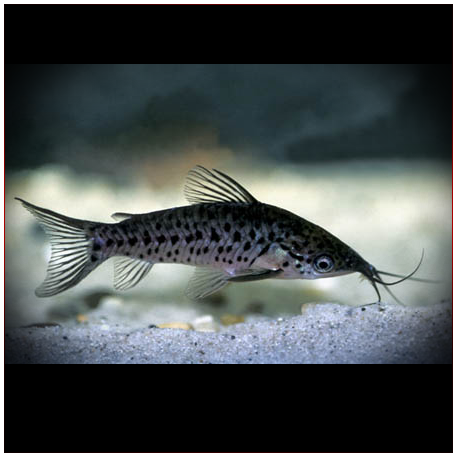More info
Datasheet
| Minimum Tank Size | 100 litres / 26.42 US gallons |
| Maximum Size | 10.0cm / 3.94inches |
| Temperature | 24°C / 75.20°F - 28°C / 82.40°F |
| Hardness | 1-20ºdH |
| pH | 5.5-7.5 |
General Description
The Porthole Catfish, scientifically known as Dianema Longibarbis, earns its name from the distinctive row of spots along its lateral line. This species is a peaceful community fish, thriving when kept with compatible tankmates in a well-maintained aquarium. With proper care and acclimatization, it can be remarkably hardy and long-lived, potentially surviving for over a decade.
Aquarium Setup
For these catfish, a biotope tank setup mimicking their natural habitat is ideal. This includes a sandy substrate, driftwood, roots, and dried oak or beech leaves scattered on the tank bottom. While heavily-planted tanks are suitable, the addition of cover is essential. The water conditions should be maintained within a pH range of 5.5-7.5, a temperature of 24-28°C, and a water hardness of 1-20°dH. The minimum tank size recommended for this species is 100 liters.
Behaviour
Porthole Catfish are exceptionally peaceful, making them well-suited for community tanks with other Amazonian species like tetras, Corydoras, and smaller Loricariids. They are non-aggressive towards conspecifics and can be kept either as solitary specimens or in small groups of 3-6 fish. Interestingly, these catfish may swim in a shoal in midwater when maintained in a group, showcasing an engaging behavior uncommon for catfish.
Feeding and Diet
These catfish are unfussy eaters, accepting a varied diet that includes dried sinking pellets, live, and frozen foods like bloodworms, brine shrimp, and chopped earthworms. Once acclimated, they may even feed from the tank's surface. Providing a mix of foods ensures proper nutrition and caters to their feeding habits.
Reproduction & Dimorphism
Information on the breeding habits of Porthole Catfish in captivity is limited, although it is suggested to maintain a small group of 4-6 fish for breeding attempts. Females are likely to be rounder in body shape compared to males, with slight thickening of the leading rays of the pectoral fins in mature males. Stimulating breeding behavior may involve simulating dry and wet seasons, offering copious live food, and creating conducive breeding conditions to encourage successful spawning.
Habitat and Distribution
In the wild, Porthole Catfish are widespread across the Amazon river basin, primarily inhabiting slower-moving creeks, tributaries, floodplain lakes, and ponds. Their natural environment consists of densely vegetated areas with ample hiding spots, reflecting their need for cover and suitable tank setup in captivity.

